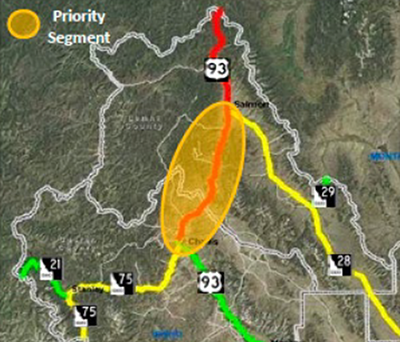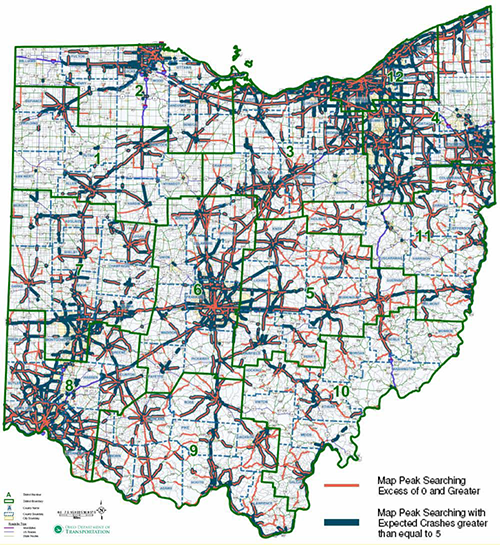Ohio, with Stakeholder Input, Develops Consistent Mapping and Data Standards for State and Local Roads
Summary from: Ohio Location Based Response System State and Local Data Integration Case Study FHWA-SA-14-036
Background
This case study, available as part of the Federal Highway Administration's (FHWA) Integration of State and Local Safety Data project, describes Ohio's efforts to integrate local roadway data into their State data system.
This case study is part of a series of four. Each case study identifies a State's experience collecting local data, the challenges and obstacles faced and how they were overcome, benefits of the practices, reasons for success, lessons learned, and applicability of the practices to other agencies.
With the majority of public road mileage in Ohio owned and maintained by local agencies such as counties, cities and villages, ODOT (Ohio Department of Transportation) faced challenges with consistency in creating and storing local road maps: there was no single standard and locating crashes on local roads was a “hit or miss” process. For the most part, local road jurisdictions did not have a consistent linear referencing system—many local roadway crash reports referenced approximate street addresses, alias street names, or intersections that no longer existed. Using street addresses as a location reference was problematic because the State road database did not contain address ranges, and the State's list of local street names was often inaccurate. Given that roughly two-thirds of crashes in Ohio happened on non-State roads, this was a significant concern.
To remedy the issue, Ohio integrated the local road system into the State Linear Referencing System (LRS) by assigning consistent route numbers and mileposts to the local roads and then brought the local roadway data into a centralized data system: the Location Based Response System (LBRS). With data standards set by ODOT, each local agency collects, inputs, and field verifies the data in LBRS. LBRS is web-based and the information is available for all stakeholders as soon as agencies enter it. Mapping and analytic tools are available through the website.
Key Accomplishments:
The following are key accomplishments of the Ohio Location Based Response System:
- Improved location references for crashes on local roads.
- Consistent mapping and data standards.
- Easy integration of compliant local data into the State roadway database.
- More efficient process for conducting safety analyses.
- Routine updates of State road miles and addressing.
- Improved data access for the State and local agencies.
Results:
The integration of local and State data via the LBRS proved beneficial for a number of State agencies, as well as the local agencies themselves. At the State level, the improved road centerline and mileposting data has enhanced crash reporting and safety analysis. Ohio now places local road crashes more accurately allowing for better analysis of road safety issues in the counties. The State also now has consistent mapping and data standards for all counties allowing easy integration and improved data access. Finally, this program helps save taxpayer dollars by reducing redundant, and sometimes conflicting, data collection activities. At the local level, one of the most important uses of the LBRS data is for better routing for 911 services by providing more accurate location information for 911 calls and support for next generation 911 implementation.
Ohio plans to improve integration by providing more guidance to local agencies on data maintenance and increasing coordinated communication among the State and local agencies. However, Ohio's experience so far with developing and implementing LBRS shows that there can be successful integration of the local road addressing and mileposting into a State system.
Contacts
Stuart Davis
State CIO/Assistant Director
Ohio Office of Information Technology
614-644-3923
Stu.Davis@oit.ohio.gov
Jeff Smith
GIS Administrator
Ohio Office of Information Technology
614-466-8862
Jeff.Smith@das.ohio.gov
Dave Blackstone
GIS Manager
Ohio Department of Transportation
614-466-2594
Dave.Blackstone@dot.State.oh.us
Stuart Thompson
Federal Highway Administration
202-366-8090
Stuart.Thompson@dot.gov









